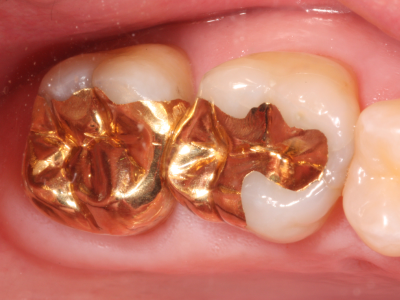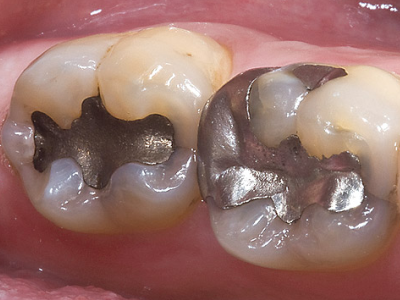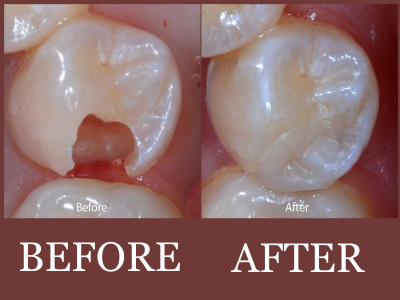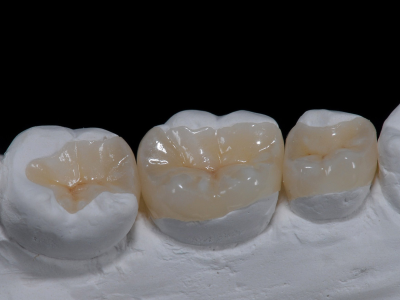What Is dental caries
Dental caries is the scientific term for tooth decay or cavities. It is caused by bacteria. These bacteria produce acids that destroys the tooth’s enamel (the outer most part of the tooth) and the layer under it which is called dentin.
Many different types of bacteria normally live in the human mouth. They build up on the teeth in a sticky film called plaque. It forms most easily over the teeth.
The bacteria turn sugar and carbohydrates in the foods we eat into acids. The acids dissolve minerals in the hard enamel that covers the tooth’s crown. The enamel erodes or develops pits. They are too small initially. But they get larger over time.
Acid also can seep through pores in the enamel. This is how decay begins in the softer dentin layer, the main body of the tooth. As the dentin and enamel break down, a cavity is created.
If the decay is not removed, bacteria will continue to grow and produce acid that eventually will get into the tooth’s inner layer of pulp which contains sensitive nerve fibers.
Tooth roots exposed by receding gums also can develop decay. The root’s outer layer, cementum, is not as thick as enamel. Acids from plaque bacteria can dissolve it rapidly.
Symptoms
Early caries may not have any symptoms. Initially there may be food lodgment in the teeth but later, when the decay has eaten through the enamel, the teeth may be sensitive to sweet, hot or cold foods or drinks.
Diagnosis
A dentist will look for caries at each office visit. The dentist will look at the teeth and may probe them with a tool called an probe and explorer to look for pits or areas of damage. The problem with these methods is that they often do not catch cavities when they are just forming. Occasionally, if too much force is used, an explorer can puncture the enamel. This could allow the cavity-causing bacteria to spread to healthy teeth.
Your dentist will take X-rays of your teeth on a set schedule, and also if a problem is suspected. They can show newly forming decay, particularly between teeth. They also show the more advanced decay, including whether decay has reached the pulp and whether the tooth requires a root canal.
Newer devices also can help to detect tooth decay. They are useful in some situations, and they do not spread decay. The one most commonly used in dental offices is a liquid dye or stain. Your dentist brushes the nontoxic dye over your teeth, then rinses it off with water. It rinses away cleanly from healthy areas but sticks to the decayed areas.
Caries caught in the very early stages can be reversed. White spots may indicate early caries that has not yet eroded through the enamel. Early caries may be reversed if acid damage is stopped and the tooth is given a chance to repair itself naturally.
Caries that has destroyed enamel cannot be reversed. Most caries will continue to get worse and go deeper. With time, the tooth may decay down to the root. How long this takes will vary from person to person. Caries can erode to a painful level within months or years.
How to avoid dental cavities?
One way you can prevent cavities is by reducing the amount of plaque and bacteria in your mouth. The best way to do this is by brushing and flossing daily. You also can use antibacterial mouth rinses to reduce the levels of bacteria that cause cavities. Other rinses neutralize the acid in your mouth to make the environment less friendly to the growth of these bacteria.
You can reduce the amount of tooth-damaging acid in your mouth by eating sugary or starchy foods less often during the day. Your mouth will remain acidic for several hours after you eat. Therefore, you are more likely to prevent caries if you avoid between-meal snacks.
Chewing gum that contains xylitol helps to decrease bacterial growth.
Another way to reduce your risk of cavities is through the use of fluoride, which strengthens teeth. A dentist can evaluate your risk of caries and then suggest appropriate fluoride treatments.
Treatment
Caries is a process. In its early stages, tooth decay can be stopped. It can even be reversed. Fluorides and other prevention methods also help a tooth in early stages of decay to repair itself. White spots are the last stage of early caries.
Once caries gets worse and there is a break in the enamel, only the dentist can repair the tooth. Then the standard treatment for a cavity is to fill the tooth. If a drill is used, the dentist may numb the area with a local anesthesia. The decayed material in the cavity is removed and the cavity is filled.
Many fillings are made of dental amalgam or composite resin. Amalgam is a silver-gray material made from silver, mercury, copper or other metals. Composite resin offers a better appearance because it is tooth-colored. Newer resins are very durable.
Amalgams are used in molars and premolars because the metal is not seen in the back of the mouth. Composite and ceramic materials are used for all teeth.
If a cavity is large, the remaining tooth may not be able to support enough filling material to repair it. In this case, the dentist will remove the decay and cover the tooth with a ceramic inlay, onlay or artificial crown. These are made in a dental lab.
Sometimes bacteria may infect the pulp inside the tooth even if the part of the tooth you can see remains relatively intact. In this case, the tooth will need root canal treatment. Your dentist will remove the pulp and replace it with an inert material. In most cases, the tooth will need a crown(cap) after the root canal treatment.
The early stages of decay are usually painless. Only regular dental examinations and X-rays (or other caries-detecting devices) can show early trouble. If your teeth become sensitive to chewing or to hot, cold or sweet foods or drinks, contact your dentist.
If caries is not treated, it likely will cause the tooth to decay significantly. Eventually, uncontrolled decay may destroy the tooth.
What is a Filling?
A filling is a way to restore a tooth damaged by decay back to its normal function and shape. When a dentist gives you a filling, he or she first removes the decayed tooth material, cleans the affected area, and then fills the cleaned out cavity with a filling material.
By closing off spaces where bacteria can enter, a filling also helps prevent further decay. Materials used for fillings include gold, porcelain, a composite resin (tooth-colored fillings), and an amalgam (an alloy of mercury, silver, copper, tin and sometimes zinc).
Which Type of Filling is Best?
No one type of filling is best for everyone. What’s right for you will be determined by the extent of the repair, whether you have allergies to certain materials, where in your mouth the filling is needed, and the cost. Considerations for different materials include:
 |
 |
|
| Gold fillings are made to order in a laboratory and then cemented into place. Gold inlays are well tolerated by gum tissues, and may last more than 20 years. For these reasons, many authorities consider gold the best filling material. However, it is often the most expensive choice and requires multiple visits. | Amalgam (silver) fillings are resistant to wear and relatively inexpensive. However, due to their dark color, they are more noticeable than porcelain or composite restorations and are not usually used in very visible areas, such as front teeth. | |
 |
 |
|
| Composite (plastic) resins are matched to be the same color as your teeth and therefore used where a natural appearance is desired. The ingredients are mixed and placed directly into the cavity, where they harden. Composites may not be the ideal material for large fillings as they may chip or wear over time. They can also become stained from coffee, tea or tobacco, and do not last as long as other types of fillings generally from three to 10 years. | Porcelain fillings are called inlays or onlays and are produced to order in a lab and then bonded to the tooth. They can be matched to the color of the tooth and resist staining. A porcelain restoration generally covers most of the tooth. Their cost is similar to gold. |
If decay or a fracture has damaged a large portion of the tooth, a crown, or cap, may be recommended. Decay that has reached the nerve may be treated in two ways: through root canal therapy (in which nerve damaged nerve is removed) or through a procedure called pulp capping (which attempts to keep the nerve alive).
What Happens When You get a Filling?
If your dentist decides to fill a cavity, he or she will first remove the decay and clean the affected area. The cleaned-out cavity will then be filled with any of the variety of materials described above.
How Do I Know if I Need a Filling?
Only your dentist can detect whether you have a cavity that needs to be filled. During a checkup, your dentist will use a small mirror to examine the surfaces of each tooth.
Anything that looks abnormal will then be closely checked with special instruments. Your dentist may also X-ray your entire mouth or a section of it. The type of treatment your dentist chooses will depend on the extent of damage caused by decay.
FILLINGS
Overview
Fillings help restore teeth damaged by decay back to their normal function, and can prevent further decay. Your dentist will consider a number of factors when choosing which type of filling material is best for you. These factors include the extent of the repair, where in your mouth the filling is needed and the cost
What to Expect During a FILLING
1. Local anesthesia – at the beginning of your filling procedure, you may be given local anesthesia to numb the area around the tooth.
2. Tooth decay removal – then the dentist will cut through the enamel using a drill to remove any decay. After the dentist removes the decay, the dentist will shape the space to ready it for the filling.
3. Etching – for a bonded filling your dentist will etch the tooth with an acid gel before placing the filling.
4. Resin application – for certain types of fillings the dentist will layer on the resin and harden it using a bright light. This makes it strong.
5. Polishing – after the filling has been placed, your dentist will polish the tooth.
